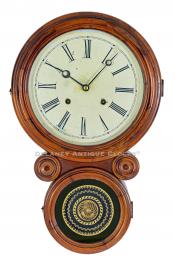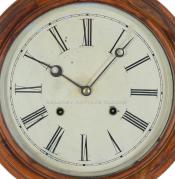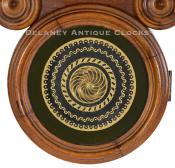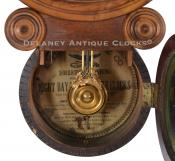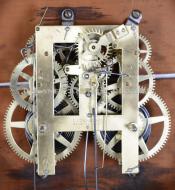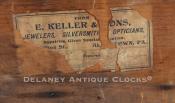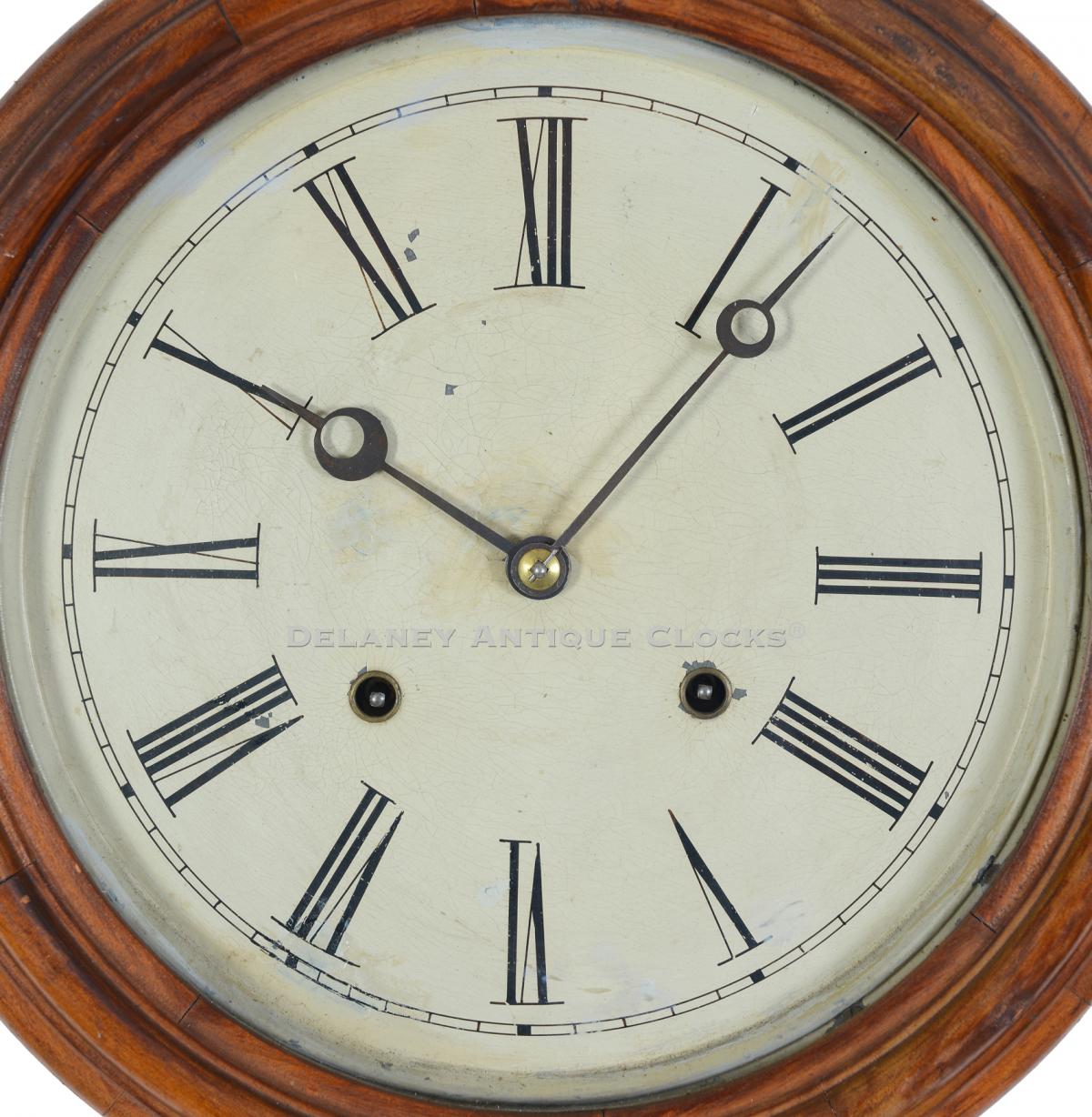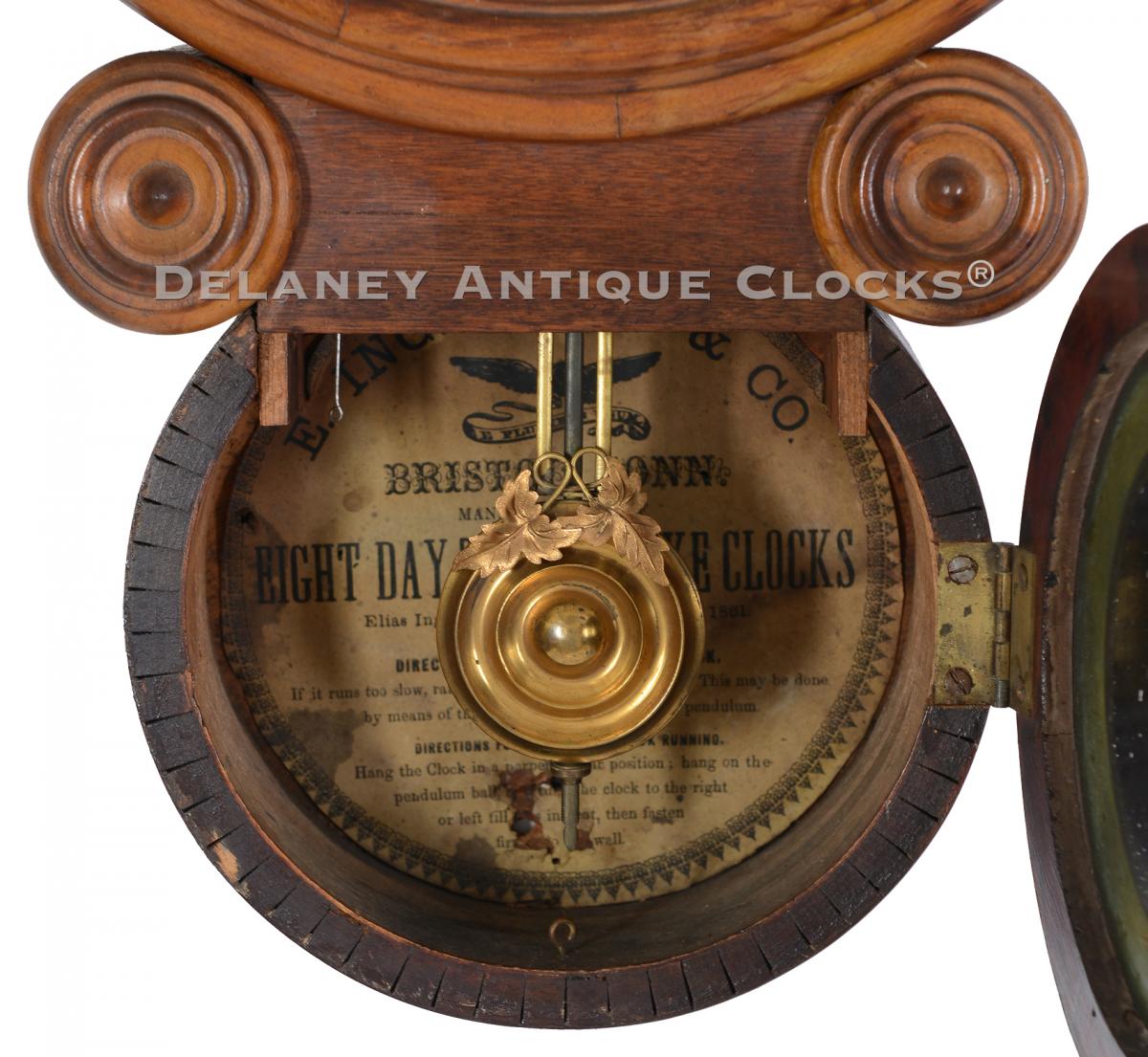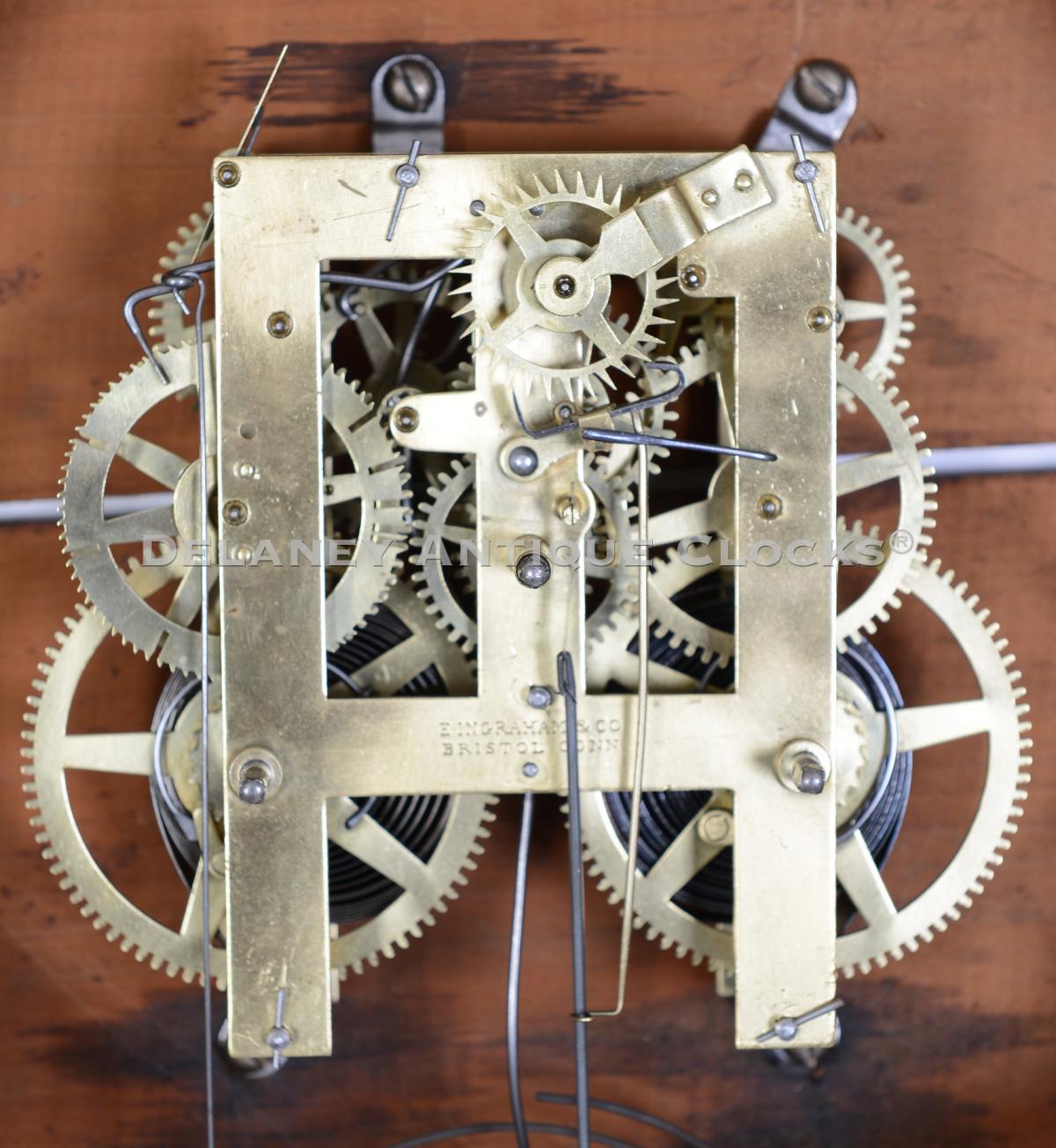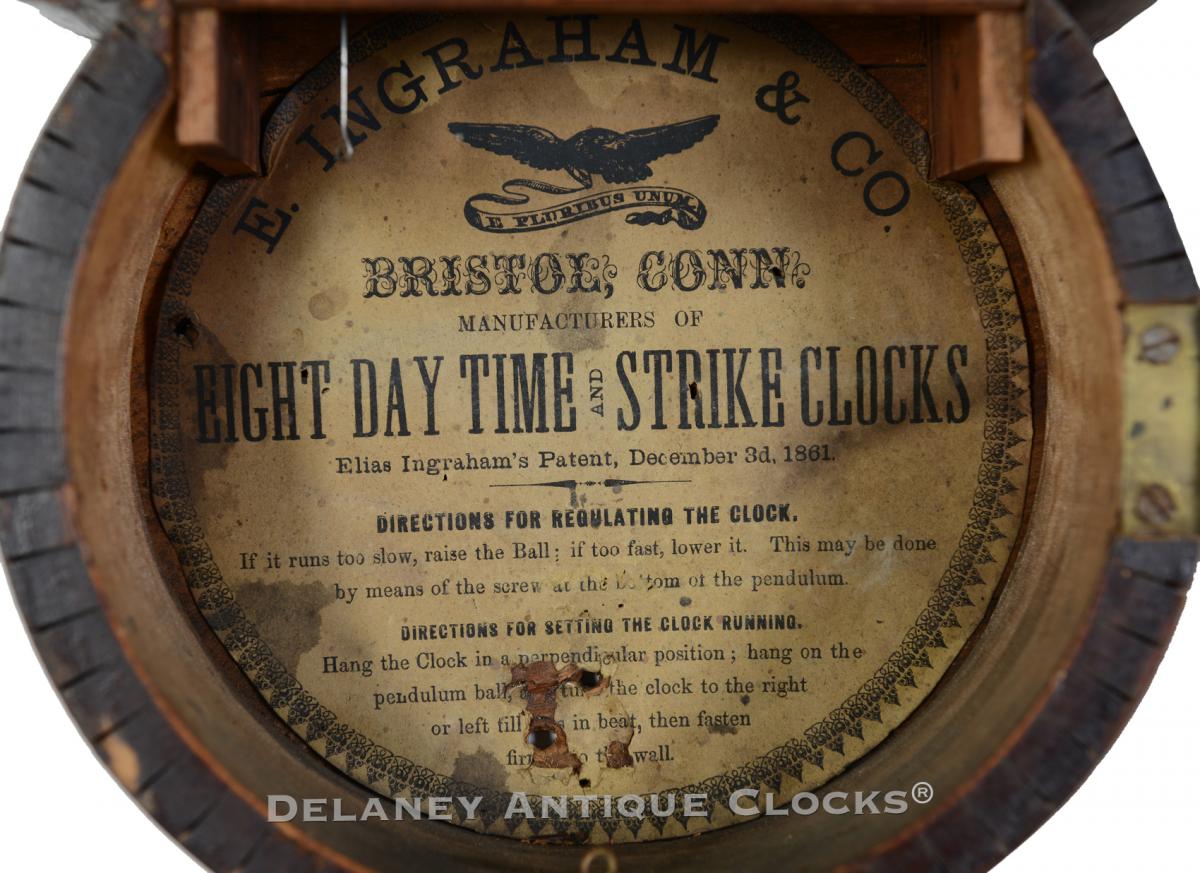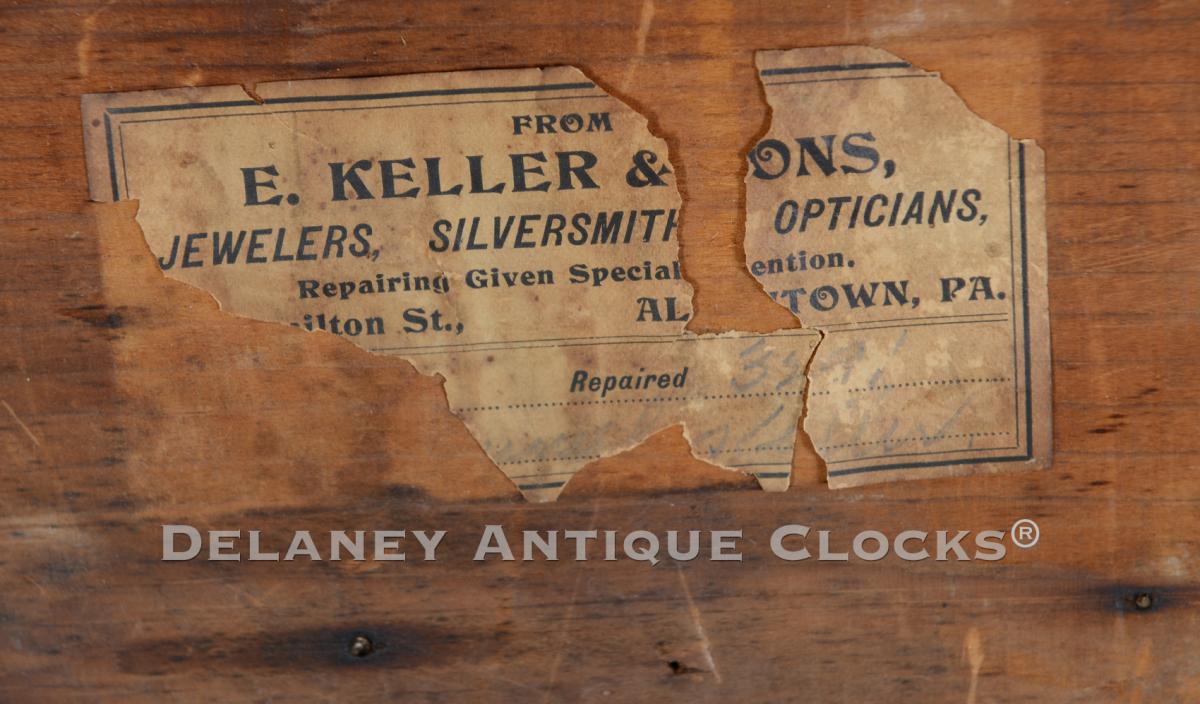E. Ingraham & CO. Bristol, Connecticut. An Ionic wall clock in walnut. 223315A.
This “Ionic” model wall clock is a very attractive form. Elias Ingraham started in the clock business as a case designer and Maker. This is one of his patented case designs for which he received a patent in 1861. The patent refers to the case’s distinctive shape, having two circular moldings used as doors separated by two circular buttons.
This example features a walnut case. The wood has been refinished to enhance its comforting tone. Both frames are fitted with glass. The upper glass protects the dial. The lower glass is painted-decorated from the back and is in excellent condition. The design features a pinwheel in the center framed by a series of concentric circles. The pinwheel is left undecorated so one can view the motion of the pendulum bob when the door is in a closed position. The Clockmaker’s label is pasted inside the case onto the backboard. It reads” E. INGRAHAM & CO / BRISTOL, CONN. / MANUFACTURES OF / EIGHTDAY TIME AND STRIKE CLOCKS/ Elias Ingraham’s Patent, December 3d, 1861.”
This dial is painted. Roman-style hour numerals are positioned on a closed minute ring. Open moon-style hands display the time.
The eight-day time and strike movement is brass construction and is powered by coil springs. It is die-stamped by the Maker on the front plate. This clock strikes the hour on a coiled wire gong mounted inside the case. The pendulum is quite fancy. This is positioned in the lower door’s center and visible through the lower glass.
This clock is approximately 21.75 inches long, 13.5 inches wide, and 4 inches deep.
It was made in Bristol, Connecticut, circa 1911.
Inventory number 223315A.
Elias Ingraham was born in Marlborough, Connecticut, on October 1, 1805. He worked as a cabinetmaking apprentice for five years in Glastonbury. In 1825, he purchased his freedom and began working as a journeyman for Daniel Dewy of Hartford. In 1828, Solomon Hinman convinced him to move to Bristol and to make clock cases for George Mitchell. It is here that Ingraham designed and constructed the “Transitional” shelf clock form. Ingraham soon moves on and works for several other clock and furniture ventures. After numerous ventures, he formed the Elias Ingraham & Company in 1857 and was granted the first two patents in case design. The first was for the “Arch Column case, and the second was for the door design found in this example, having two circular doors separated by decorative rosettes. This design became extremely popular, and its influence finds its why in some of Ingraham’s competitor’s models. In 1860, the firm’s name changed to E. Ingraham & Company, reflecting a partnership with his son Edward. Elias died at his summer home on Martha’s Vineyard in August 1885. The business continued in various forms.

